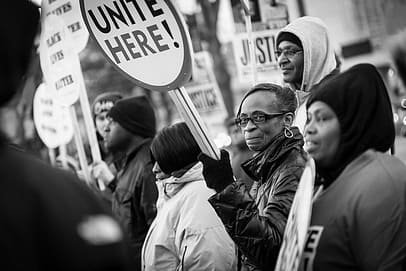If we knew the secret to getting everyone at the table and on the same page toward the realization of a goal, we’d already be well on our way to the livable, healthy, and equitable communities many of us dream of. In reality, the dynamics of human social relationships and the transactions they impact are seldom easy or clear-cut. And even once we’ve brought everyone to the table, how do we then turn the tables on the issue we seek to address?
What is Health in All Policies?
Health in All Policies (HiAP) is a framework that seeks to improve the health of all people through the cross-sectoral, cross-policy promotion of health and equity to eliminate health disparities. This is accomplished through collaboration and engagement with diverse stakeholders toward structural and process change. Many sectors do not have obvious connections to health, yet the impact they can have on perpetuating health disparities and inequities is often very real. For example, the design of a community can impact physical activity and chronic disease, and we may find disparities between more and less racially diverse parts of town.

The HiAP framework can assist in bringing decision-makers to the table to start conversations around health and equity, and how they might institutionalize this consideration such that future decisions that could unnecessarily and negatively impact a population will include this same consideration. Using our example, a city council, having bought into the HiAP framework with the help of local advocates, may include in the next revision of their community comprehensive or design plan provisions to ensure equity in how community resources are allocated and prioritized, such that more racially diverse parts of town receive a fair allocation of the benefits derived from the city’s plan (e.g. more or better sidewalks and walking paths to local grocery stores or health services). A few real-world examples of how the HiAP framework has made an impact, specifically through the use of an HiAP tool, the Health Impact Assessment (HIA), were highlighted at the 2015 National HIA Meeting in Washington DC. These examples show how an HIA helped to establish a diversion program for non-violent offenders that enabled those individuals to get back on track and stay out of prison. Another HIA helped to replace unsafe manufactured housing for low-income residents that otherwise could have suffered health consequences from exposure to mold and other household hazards.
Historical Context in Turning the Tables on Injustice
This work of turning the tables on systemic injustices necessitates a historical understanding of the ways in which social norms and culture have developed alongside industry sectors and public policy, leading, for better or worse, to the cities, states, and nation we have today. Such an understanding serves to uncover systemic injustices that perpetuate a continual feedback loop of inequity. But even supposing decision-makers are open enough to have these conversations and understand the importance of addressing disparities, how do we then move from understanding to tangible change?
Numerous studies have evaluated coalition development and advocacy approaches to determine the keys to their success or failure. There are some valuable lessons to be learned, like how subtle power dynamics, unspoken messages, and trust can make or break a collaborative effort. Yet applying these lessons in a real-world context can be challenging and we are not always 100% or even 50% effective. This is perhaps why an understanding of place and history are central to effective coalition building and collaboration. With a historical context and knowledge of a place and/or people, we can begin to understand barriers to trust and the underlying dynamics resulting from social, cultural, environmental, historical and political factors that will either support us in coming together with diverse stakeholders to achieve a goal or put a stop to our efforts before we’ve even begun. This includes an understanding of the decision-maker’s position in the equation.
Getting buy-in from decision-makers requires approaching them with knowledge of their organization’s priorities and what’s important to them personally, presenting information in a way that will speak to those priorities and values. Even then, this approach does not guarantee every decision-maker will be open to having a conversation, stay engaged, or be able to implement every recommendation. This is the nature of an adaptive challenge.
Combined Efforts toward Change
HiAP is not a magic bullet that can by itself turn the tables on hundreds of years of systemic injustice, but it can call attention to the importance of considering equity and health in decisions across diverse sectors and policy areas. In this way, it provides a means to alleviating health disparities and social inequities by making recommendations for removing barriers to health and equity. This process also provides an opportunity for increasing the cultural competency of decision-makers and the community at large, having the potential to spark important conversations that otherwise wouldn’t have happened.

Other concurrent and collaborative efforts are needed to support meaningful systems and process change. This can happen intentionally or spontaneously through advocacy groups, social movements, institutional reprioritization based on changing markets, and more. For instance, the Black Lives Matter movement is asking our society to have meaningful conversations around racial injustices that have taken root and been perpetuated throughout our society for hundreds of years. HiAP applied in this context can provide a framework for changing policies that, as a result of these conversations, are known to systematically benefit or disadvantage one racial group over another.
It will take time and concerted effort on the part of HiAP promoters and practitioners to institutionalize HiAP into the practices and systems of partner industries and government, but it is a needed step and one that is coming in a time of growing disparities and civil unrest. The way forward can be a positive and constructive one, and I advocate HiAP has a role to play.




